30 Spring Cleaning Tips Every Prepper Should Follow
Are you looking for spring cleaning tips every prepper should follow? If so, then you need to make sure you have these tips on hand. You won’t believe how fast you can get your house into shape when you have the right tips! I do love prepping, but I also like to ensure I have everything I need to spring-clean my home.
Often times we view cleaning in the true sense of the word. We plan on removing dirt, dusting, and wiping down baseboards and light fixtures. Yes, these are all chores that need attention, probably more often than each spring. But as we try to be prepared for emergencies and survival situations, we also need to take stock of what we have, clean out old inventory, and stay on top of priority items and skill sets.
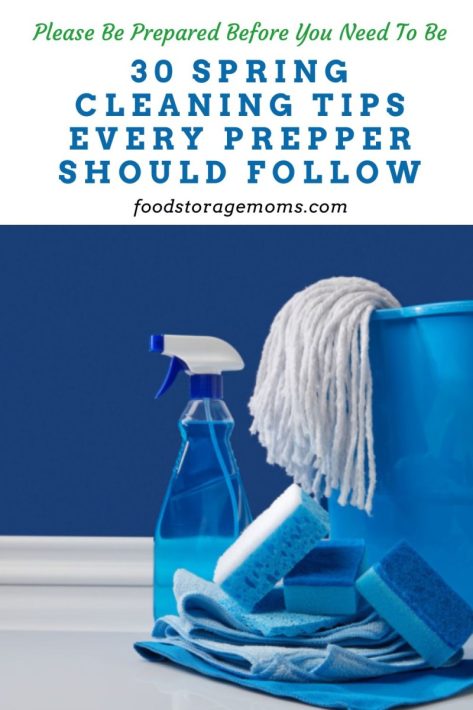
1. Assess and Update Emergency Supplies
Start your spring cleaning by reviewing and updating your emergency supplies. Check expiration dates on food, medications, and other perishables. Ensure your first aid kit is fully stocked, and replace any items that may have been used or expired. Invaluable Tools Necessary for Transporting Emergency Supplies
2. Rotate Food Stockpile
Rotate your food stockpile to prevent items from going bad. Use the “first in, first out” principle to consume older items before newer ones. This ensures that your food supply remains fresh and ready for consumption during emergencies. 30 Non-Food Survival Items To Stockpile
Many people are intimidated by the thought of how best to acquire and store food for emergencies. I’ve always told my readers not to go into debt for food storage items. You can buy things one can or case at a time. If you’ve been prepping for a while, you should know by now what your family likes to eat and have stored non-perishable food products accordingly.
3. Inspect Water Storage
Check your water storage containers for leaks or contamination. Clean and sanitize them regularly to maintain the quality of stored water. Ensure you have an adequate supply of water purification tablets or filters. Water Storage: How Much Do You Need?
Water purification systems are vital as you put your emergency preparedness plan together. Part of that plan should be to clean or replace filters as suggested by the manufacturers. As for the stored water, cleaning might mean draining and refilling barrels, tanks, and other storage containers. I like to use a product called Water Preserver in my containers since the water only needs replacing every five years. Check out my archive for information about filtration systems, treatment ideas, and how much water your family needs to have on hand.
4. Evaluate Communication Devices
Assess the condition of your communication devices such as radios, walkie-talkies, and emergency chargers. Replace batteries and test equipment to ensure they are in working order. Consider upgrading to more advanced communication tools if needed. Communication Options for Your Family During a Disaster
If you have faulty items it may be time to “clean out” the broken units and replace them with reliable gear. Communication is critical during emergencies, so having equipment you trust will work gives you a level of confidence and comfort you want and need.
5. Review Emergency Plans
Review and update your family emergency plans. Ensure everyone is familiar with evacuation routes, meeting points, and emergency contacts. Discuss any changes in family dynamics or circumstances that may impact your emergency plans. Navigating Emergency Preparedness with Oxygen
As the kids get older their schedules change and your plans need to change with them. You should update plans so they are current and clean out what doesn’t apply anymore. The same thing applies to you and your spouse. If job assignments and locations are different from last year, you have some health issues to deal with, or you’ve acquired new preparedness devices, you need to update plans as appropriate.
6. Clean and Organize Bug Out Bags
Inspect and organize your bug-out bags. Remove unnecessary items and add any essentials that may be missing. Check the condition of clothing, sleeping bags, and other gear. Make sure all items are in good working order. How To Tag 72-Hour Bug Out Bags For Survival
7. Maintain Fire Safety
Check smoke detectors and carbon monoxide alarms in your home. Replace batteries and test each unit to guarantee they are functioning correctly. Inspect and clean chimneys and heating equipment for potential fire hazards. Safety Tips for Preppers: Ensuring Preparedness in Any Situation
Clear out any stacked materials and debris around furnaces, water heaters, and fireplaces. Clean out window wells and trim trees and bushes that may cause a safety or fire hazard.
8. Pest Control
Spring is an excellent time to inspect your prepper storage areas for pests. Use natural deterrents or traps to keep rodents and insects away from your supplies. Ensure that your storage containers are sealed tightly to prevent infestations. Keeping Pests Away from Food Storage
If those critters have caused any damage, replace what needs to be replaced and get good-quality items going forward. My mantra is to buy right the first time, it saves a ton of money in the long run.
If you feel the item still has a useful life, then get it repaired as needed, even if it means having a professional involved.
9. Secure Perimeter
Inspect the perimeter of your property for vulnerabilities. Repair fences, gates, and locks. Trim overgrown vegetation that may provide cover for intruders. Maintaining a secure perimeter is crucial for prepping and overall safety. 20 Ways to Step Up Security Measures Around Your Property
10. Reinforce Shelter Structures
Check the structural integrity of your shelter, whether it’s your home or a designated bug-out location. Reinforce weak areas, repair leaks, and ensure windows and doors are secure. A well-maintained shelter is essential for survival. Why a Boat is an Essential Tool for Survival
11. Practice Self-Defense Skills
Review and practice self-defense skills regularly. This may include firearm training, martial arts, or other defensive techniques. Ensure all family members are familiar with basic self-defense strategies.
Many of us set New Year’s resolutions to lose weight and get in better shape. Time to “clean up” your act and follow through with a healthy body and mindset.
12. Inventory and Rotate Fuel Supplies
Inspect and rotate your fuel supplies, including gasoline, propane, and other fuel sources. Proper storage and regular rotation prevent fuel degradation and ensure you have a reliable source of energy during emergencies. Emergency Fuel To Store For Survival
Many fuel resources can age and go bad over time, particularly gasoline for those power yard tools. Inspect and evaluate what’s on hand and clear out what needs to be disposed of. Be sure to follow local regulations when doing so.
13. Vehicle Maintenance
Perform routine vehicle maintenance, including checking fluid levels, tire condition, and brakes. Keep your vehicles in good working order to ensure they are ready for use during evacuations or other emergencies. Using Your Vehicle as a Tool for Prepping
If your vehicle looks like you just had a neighborhood party inside, it’s time to clean house. Take pride in what you own and show true “ownership” by proper maintenance and tidyness.
14. Upgrade Security Measures
Consider upgrading your home security system or reinforcing doors and windows. Install motion sensor lights and surveillance cameras to enhance overall security. A well-secured property is less susceptible to potential threats.
Those home security cameras have come down in price. Strongly consider installing cameras at all entry locations and places where you have valuable items, including kids! They usually run on batteries, so clean out the old power sources and stay on top of proper maintenance. We’ve had Ring systems and like how they operate.
15. Financial Preparedness
Review your financial prepping strategy. Ensure you have cash on hand in emergencies, and consider diversifying your assets. A solid financial plan is a crucial aspect of overall preparedness. You have to keep tax return information for an extended period, so check with your tax advisor regarding what to clean out and shred.
16. Community Engagement
Connect with your local community and prepper groups. Share information, resources, and skills with neighbors. Building a strong community network enhances collective resilience in times of crisis. 10 Uses for Honeycombs Beyond Your Breakfast Table
It may be time to clean the slate with the old crowd. Make some new friends and associates who will add to your well-being and mental preparedness.
17. Skill Development
Identify and develop new skills that contribute to your self-sufficiency. This could include gardening, foraging, water purification, or any other skill relevant to survival in various scenarios. Home Economic Skills You Should Teach Your Kids
If you’ve moved to a new location, you should become familiar with the weather risks you may have to deal with. There are places that at prone to flood, wind damage, or wildfires. Make the necessary adjustments and make the tough decision to clear out what won’t apply and get new gear and prep items that will come in handy to weather the new challenges ahead.
18. Clothing and Footwear Check
Inspect your clothing and footwear for wear and tear. Ensure you have appropriate attire for different weather conditions, events, and activities. Replace or repair items as needed to guarantee comfort and functionality. How to Use Old Clothing for Emergency Preparedness
As you clean out those closets, consider donating the usable items to the local homeless shelter, Good Will, or Deseret Industries.
19. Organize Important Documents
Organize and secure important documents such as identification, insurance policies, and medical records. Keep physical and digital copies in a waterproof and fireproof container for quick access during emergencies. How to Help Your Family Organize Important Documents
If you have digital files that need to be updated and cleaned of unnecessary items, don’t wait until you got overwhelmed, perform that cleanup effort now.
20. Test Generators and Power Sources
If you have generators or alternative power sources, test them to ensure they are operational. Stock up on fuel for generators and rechargeable batteries for other devices. What Happens When The Power Goes Out
We have some Yeti units from Goal Zero. They are handy devices when the power goes out and you need to charge up or run things directly. We check them periodically to make sure they are properly charged and ready to go.
21. Emergency Lighting
Check and replace batteries in emergency lighting devices such as flashlights and lanterns. Consider investing in solar-powered lights for a sustainable and reliable lighting source during power outages. What to Use for Emergency Lighting
We have many solar flashlights and a few solar lanterns. We keep our solar flashlights in our window sills all the time so we know they are charged and ready to light the way when needed.
22. Evaluate Medical Supplies
Review and replenish your medical supplies. Check the expiration dates on medications, update first aid kits, and ensure you have a comprehensive range of medical supplies to address potential health issues. 10 Reasons Stockpiling Emergency Supplies Makes Sense
I like to get my prescriptions in 90-day supplies. That way I know I have enough to carry me through an emergency, yet they are fresh enough to maintain their medical potency. There have been a few times that I’ve had to clean out my medicine cabinet to dispose of expired prescriptions. There are locations where you can take those meds so they are properly disposed of.
23. Water Harvesting and Filtration
Explore water harvesting options, such as rain barrels, and ensure your water filtration systems are functioning correctly. Water is a critical resource, and having multiple methods to source and purify it is essential. The Best Portable Water Filtration Unit
Some municipalities won’t allow you to collect your own rainwater, as strange as that sounds. Be sure to check with your local government water agency for guidance.
24. Map and Navigation Skills
Brush up on map reading and navigation skills. Familiarize yourself with local and regional maps, and practice using a compass. These skills are invaluable in case of evacuation or navigating unfamiliar terrain. Navigating Emergency Preparedness with Oxygen
I’m amazed how many individuals haven’t learned how to read a map and struggle to tell where north, south, east, and west are if they’re standing in their front yard. Take some time with your children so they can learn to read maps and use local landmarks to help determine directions.
25. Food Preservation Techniques
Learn and practice food preservation techniques such as canning, dehydrating, and fermenting. These methods extend the shelf life of food, reducing waste and ensuring a more sustainable food supply. 5 Incredible Food Preservation Methods
You need to periodically review your inventory of stored preserved food. Yes, they have a reasonably long shelf life, but they can expire. Clean out the old bottles and cans and make room for this year’s harvest and newly canned items.
26. Inventory Tools and Equipment
Take inventory of your tools and equipment, ensuring they are in good condition. Include essential items such as knives, multi-tools, and repair equipment. Having reliable tools enhances your ability to address various challenges. How to Keep Track of Your Stockpile Inventory
Sometimes we forget when we’ve loaned out various tools to family and neighbors. Sad, but they also forget who they borrowed from. It’s a good idea to have a log book in the top drawer of your tool chest where you can log tools in and out.
If you have tools that are wearing out or have broken handles or other parts, consider clearing out those items and replacing them with more up-to-date and reliable tools.
27. Mental Health Check
Pay attention to your mental well-being and that of your family members. Prepping can be stressful and so can making it through those challenging times. Make time for relaxation and stress-relief activities. Consider including mental health resources in your emergency plans. Mental Health Issues After A Disaster
A day at the park, a mountain or trail hike, a spin on a bike, reading a good book, or a trip to your favorite fishing hole are all rewarding activities for mind and body. We are told to clear out those mental cobwebs from time to time, so schedule some free time to benefit your own well-being.
28. Practice Drills with Family
Conduct regular emergency drills with your family to ensure everyone is familiar with evacuation procedures and communication protocols. Practice scenarios for different types of emergencies.
29. Evaluate Clothing and Footwear
Inspect your clothing and footwear for wear and tear. Ensure you have appropriate attire for different weather conditions. Replace or repair items as needed to guarantee comfort and functionality.
30. Stay Informed
Stay informed about current events, weather patterns, and potential threats. Regularly update your knowledge about survival techniques, prepping strategies, and new technologies that can enhance your overall preparedness. Navigating Emergency Preparedness with Oxygen
Now that we’ve covered some unique activities in our cleaning efforts, let’s cover some of the more traditional things that need our cleaning attention and efforts. It’s a good idea to put together a spring cleaning checklist so you don’t forget and overlook an area that needs your attention:
- Get out that trusty vacuum and start cleaning baseboards, ceiling fans, blinds, and drapes. Some of these could also use a scrub with a microfiber cloth, some soap, and elbow grease once the dust and dirt are gone.
- Carpets not only need a good vacuum treatment each week or so, but also some spot removal efforts. There are some great spot removers designed for carpets and couch fabric. Be sure to follow the manufacturer’s guidelines.
- Every kitchen appliance is very prone to get dirty and needs a deep clean. My husband has been good at cleaning the stove top at least each week, and since we have a gas stove, that means removing the grates. Both the outside and inner shelves of your refrigerator can get fingerprints, spills, and food crumbs. Take all the items out of the fridge for a few minutes so you can thoroughly scrub those shelves.
- Check the items in your freeze to see how old they are and if some have freezer burn. Clean out old items, and if you don’t have an auto-defrost unit, place food items in a cooler and let the frost buildup defrost before wiping down the shelves.
Other Areas Needing Attention
- Areas with tile and related grout stains often don’t get much attention. Yes, it could mean getting down on your hands and knees to do a thorough job. If that’s not in the cards for you, get another family member to help out.
- Those heat vents and ducts need cleaning more than we may think. Hopefully, you’ve been faithful in changing out the furnace filters on a timely basis. That being said, the vents still pick up lint and dust over time. A few years ago we had professionals come can clean out our ducts, including the one from our dryer.
- Depending on the type of shower you have, it may be time to pull down that shower curtain and throw it in the washer, or get out some shower tile and door cleaning solution like white vinegar in a spray bottle to remove soap residue. You may see some mold or mildew buildup that needs some special attention.
- It may require you to get out a small step stool or ladder but don’t forget to clean those light fixtures too. They tend to attract dust that can build up and block out the light. Consider replacing those bulbs with LED units, and we’ve found the natural light units are brighter than the soft white or other types.
- If it’s been a while, flip over those mattresses for a cleaner look and possibly more sleep support.
- Those bedroom and living room drapes could be getting a little old and need a fresh look. If still vibrant, take them to get dry cleaned for a nice refresher.
My Favorite Cleaning Tools
- Mop
- Toilet Bowl Cleaner (I have one of these in both bathrooms)
- Clorox Wipes
- Bleach (without the scent)
More Tips
Final Word
Incorporating these 30 spring cleaning tips into your prepping routine will help ensure that you are well-prepared for any potential emergency. Regular maintenance, skill development, and staying informed are key aspects of maintaining a resilient and self-sufficient lifestyle. What are your favorite cleaning tips that every prepper should follow? May God Bless this World, Linda
Copyright Images: Cleaning Supplies Depositphotos_188872484_S By AntonMatyukha, Sponges Rags and Detergents Depositphotos_302329454_S By Dekol

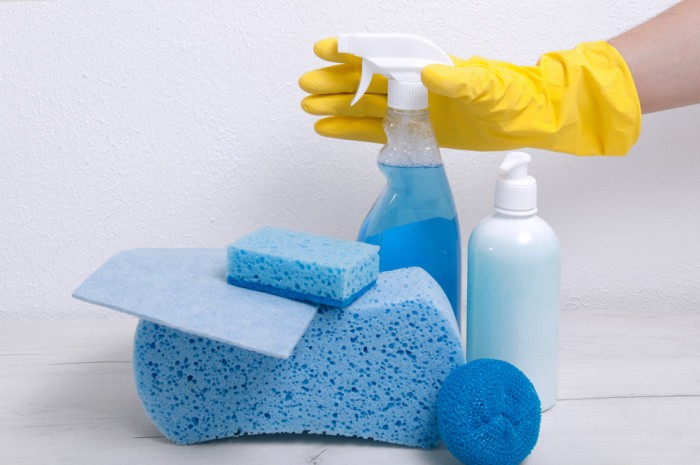

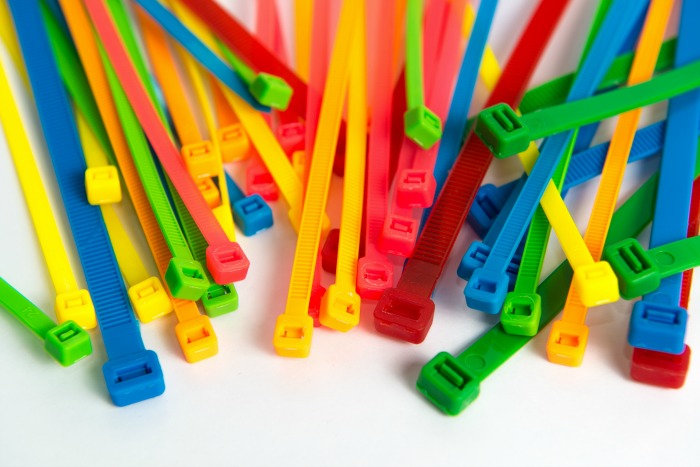
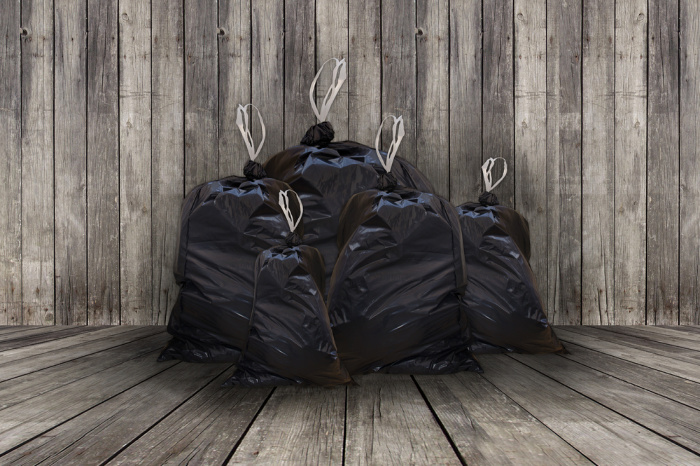

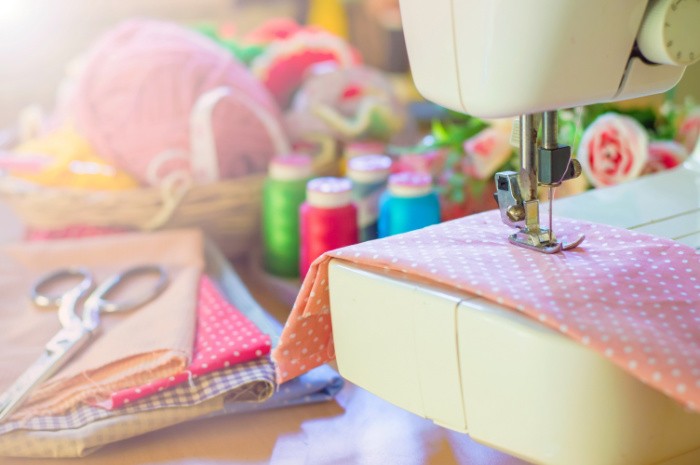






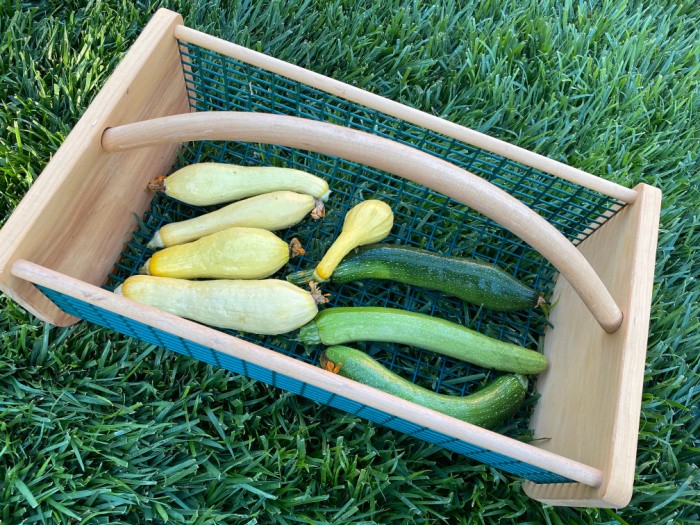







For once I have a jump on this article. I purchased 2 power donuts (surge protector/usb/regular outlets) eliminating extra extension cords. Replacing Samsung phone and tablet with Apple will improve communications with our grandsons. Furnace and water filters have been replaced.
We have always organized our pantry “first in, first out” I cook down thru the winter, clean out and prepared to restock. We get OTC cards allowing us to restock toiletries and over the counter needs. Bug outbags need work. Smoke and carbon monoxide alarms are hardwired and backup batteries checked.
Generator is inspected each fall and test runs itself every Wednesday.
Our car passed inspection in November, New tires in summer, and brake and rotor inspection in November.
Finances have been reviewed and 2023 taxes are done and accepted.
At least this time I don’t feel overwhelmed.
HI Chris, whew, you got a lot done my sweet friend! You are rocking it with getting ahead of the game! I love it! Linda
Love these spring cleaning tips! But also, don’t forget about your AC filters. Giving them a quick check and repalcement can make a huge difference. Clean filters mean your AC works less hard to keep you cool, saves you some money on energy bills, and keeps the air in your house clean and free of allergens. It’s a super easy fix that can save you from a headache and a hit to your wallet down the road.
Hi First Choice, you are so right about the AC filters! Great comment, thank you for sharing, Linda